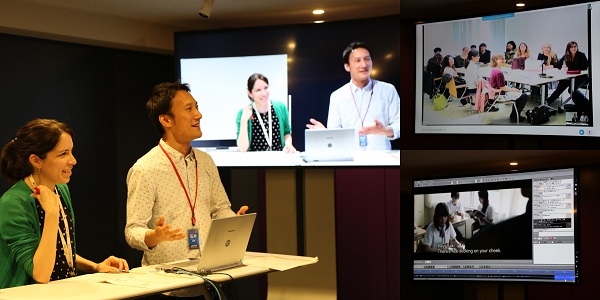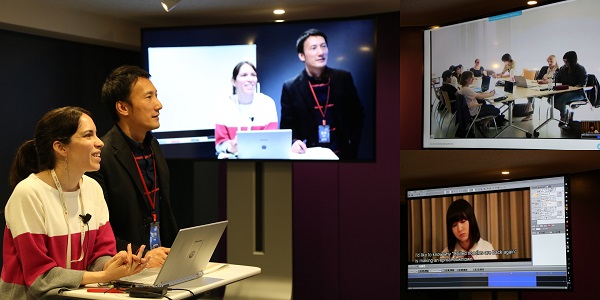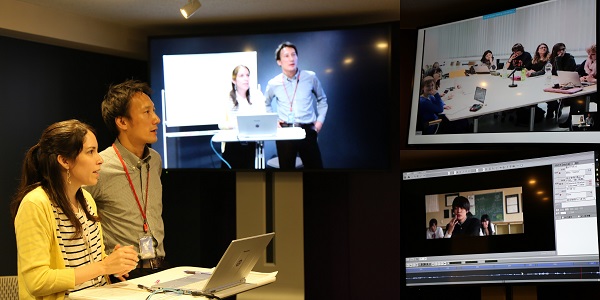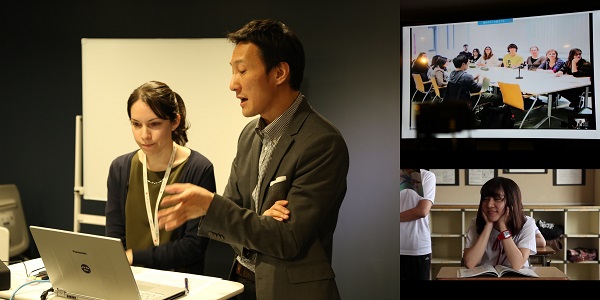第5講では、これまで手がけた字幕の最終調整を行います。上映会用に字幕をブラッシュアップした学生たちは、取り組みの中で浮かんだ疑問についてディスカッションしていきます。
ほとんどのセリフについてニュアンスやトーンが伝わる字幕に翻訳した学生たち。それでも、日本独特の言い回しやフレーズは残っています。
例えば高校生が使う「ドンマイ」というセリフ。当初は“Never mind”と訳していましたが、どういった意味で使われているのか改めて意見を交換。“Don't worry!”に近い意味なのでは、という案が挙がり、修正を施しました。
また、主人公・咲紀が想いを寄せる智也が皮肉っぽく「すいませんねー」というセリフについても、表記を工夫することで英語でも同じニュアンスが観客に伝わるように。言葉通りに訳していては伝わらない映像翻訳の面白さや難しさと向き合いながら、最後の講義は進みました。
セッションの最後には、英語版のタイトルを考えるためのディスカッションを。ストーリーや観客がどう受け取るのか、どんなキーワードを使えば効果的なのか――クラス全員で考えたタイトルは“Beyond the Tip of Her Tongue”に決まりました。
ついに完成が見えた学生たちによる英語字幕。発表の場である世界最大級の日本映画祭「ニッポン・コネクション」では、さらに磨きをかけた字幕とともに“Beyond the Tip of Her Tongue”が世界に向けて上映されます。
For their fifth class, the students made final adjustments to the subtitles they have worked on up until now. Here, they engaged in a discussion regarding questions that came up amidst their struggles throughout their subtitling adventure.
By now, the students have created expressive and accurate subtitles, however, a few unique Japanese expressions and phrases still left them in question.
For example, there was a line which contained the Japanese word donmai (roughly meaning “don’t worry about it”). Initially, some of the students translated it as “Never mind”, but they ended up having to discuss the meaning of it once more. In the end, the class came to a consensus that translating it as “Don’t worry” was more appropriate for the scene.
Another example is the way Tomoya sarcastically says suimasen ne (meaning “sorry”) as he jokes with his friends. The class was able to effectively translate and convey Tomoya’s sarcasm so that even an English-speaking audience could understand it. Realizing that it isn’t just a matter of translating word for word, the students continued to do their best going face to face with both the fun and difficulty of media translation.
At the end of this section, the students engaged in a discussion about renaming the English title of the film. After considering the story, how it would be interpreted by the audience, and which words would be most effective, they decided that “Beyond the Tip of Her Tongue” was more suitable a title than “Deep Tastes”, which was the original English title.
Approaching the end of their translating journey, the students finally saw their subtitles come to a completion. With thoroughly refined subtitles, “Beyond the Tip of Her Tongue” will make its international debut at Nippon Connection, the biggest festival for Japanese film worldwide.





